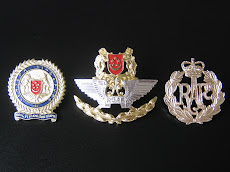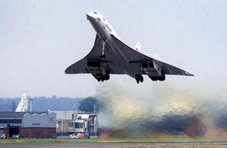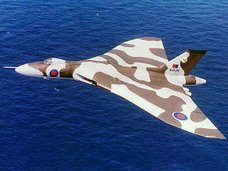
>>> Testing the A380
BEFORE THE FIRST fully assembled A380 even reached the runway it spent over three months going through a battery of ground tests on hydraulics, electrical circuits, landing gear systems, flight controls, fuel systems and navigational systems. It was also subjected to intense pressure tests, vibration tests, flight simulation tests and load bearing tests.
Since the A380 first took to the skies on 27 April 2005, Airbus has been running the aircraft through a rigorous test flight campaign. In all, five aircraft will spend a total of 2,500 flight hours, or 312 working days, being tested in the air.
In addition to the ground tests and flight campaigns, a separate A380 airframe, the aircraft structure, is undergoing the most extensive fatigue tests ever carried out on a complete airframe. Conducted in Dresden (Germany) over 26 months, the tests will provide information on pressurisation and depressurisation. This round the clock programme represents the equivalent of 47,500 flights.
The A380's developmental progress and testing success were manifested in the completion of the A380's first long haul test flight from Toulouse (France) to Singapore. Singapore, the first city scheduled to operate A380 commercial flights, was also the first city outside Europe to welcome the new test flight aircraft on 11 November 2005.
The A380 arrived in Singapore Airlines and Airbus livery in honour of its launch customer Singapore Airlines. Moving on, the test flight programme has taken the A380 to other cities, providing engineers with the opportunity to test the aircraft in long haul conditions and in various airports.
This December, the world's largest cabin trainer was installed at the Airbus training centre in Toulouse. The state-of-the-art trainer features a double-deck replica of the actual aircraft, designed for cabin and flight crew safety training in both normal and emergency flight situations.
Meanwhile, construction of the first A380 destined for service with Singapore Airlines continues. In April 2005, the massive Singapore Airlines tail fin section was laid in place and in November the engines were powered up for the first time.
We will keep you updated throughout 2006 on the testing of the Singapore Airlines A380 aircraft.
Acknowledgement:
Article published by Singapore Airlines A380 Team in Singapore Airlines A380 eNewsletter, issue 08-05 dated December 2005.
Photo by Airbus.
Friday, December 30, 2005
Tuesday, December 27, 2005
Posted by
Derek Yeo
on
Tuesday, December 27, 2005
0
comments
![]()
Monday, December 19, 2005
>>> Iran's nuclear threat
by Derek Yeo
STRATFOR, A CIVILIAN intelligence firm based in the United States, yesterday quoted an Israeli army report of an impending nuclear threat from Iran.
By March 2006, Iran could begin uranium enrichment for producing nuclear weaponry. In the report, General Dan Halutz, Israel's Chief of Defence Forces cautioned that Iran would reach the "point of no return" in its nuclear plans.
Iran claimed that its nuclear work was peaceful, conducted mainly for energy needs. However, the United Nations, United States and European Union suspected the Iranians of harbouring secret plans to develop nuclear warheads.
Meanwhile, talks between Iran and the UN, US and EU had stalemated. The EU expressed concern on Thurday: "The European Council is gravely concerned at Iran's failure to build confidence that its nuclear programme is exclusively peaceful."
Closer home, Iranian-Russian military ties had upped a notch. Russia agreed to sell high-tech Tor-M1 air defence missiles to Iran. That the sale was going ahead despite official US-EU protests sent mixed signals about the Russian stance on the crisis. Facing reporters, Russia's Defence Minister Sergei Ivanov deadpanned: "The sale will go ahead."
The Americans especially, voiced concern over Iran upgrading its missile technology, claiming new evidence proved Iranian attempts to develop nuclear-armed missiles.
Recently, the Islamic Republic had taken its confrontation with the West a step further. President Mahmoud Ahmadinejad (above) called for Israel to be "wiped off the map". And just days ago, he again created an international furore by calling the Holocaust a "myth", saying Israel should be re-sited to Europe.
The influential Al Ayyam newspaper had this to say in an article: "Ahmadinejad's statements hurt the Palestinian cause because Israel and the Holocaust enjoy international recognition, and any denial of the Holocaust and Israel hurts not only those behind it, but also justifies Israeli actions against them."
Speculations were rife that the Jewish state would have to decide soon on possible military action to defend itself. But an air attack against Iran would set back the Middle East peace process. Analysts believed that an Israeli strike against nuclear targets in Iran would be difficult as the Iranians - having learnt from a similar Israeli attack against Iraq in the eighties - had dispersed or hid their key installations.
In such a scenario, Hamas - the Palestinian militant force - had threatened retaliatory action against Israel. Hamas' chief Khaled Meshaal, told the press that: "If Israel attacks Iran, then Hamas will widen and increase its confrontation of Israelis inside Palestine."
A number of options was opened to Israel for an attack: a joint Israeli-US operation via Iraq; a strike using nuclear-tipped Jericho II missiles; a Saudi-aided raid; and an attack via Turkey.
Strong Israeli-Turkish military ties made the last option most pragmatic. But secular Turkey might not agree to help in attacking its Islamic neighbour.
An Israeli attack against Iran's Uranium Conversion Facility at Isfahan would revive memories of a similar raid against Iraq's Osirak nuclear reactor on 7 June 1981. In a four-hour mission code-named "Operation Babylon", a flight of 16 Israeli F-15 Eagles and F-16 Falcons attacked the reactor, destroying it completely. The raid stunned Iraq, caught totally off-guard.
Following the raid, Israel stated: "On no account shall we permit an enemy to develop weapons of mass destruction against the people of Israel."*
An ominous statement indeed, that did not augur well for peace in the Middle East.
* "Two Minutes Over Baghdad" by Amos Perlmutter, Michael Handel and Uri Bar-Joseph, Page 143, Corgi Books, published 1982
Posted by
Derek Yeo
on
Monday, December 19, 2005
0
comments
![]()
Saturday, December 17, 2005

>>> F-22 Raptor enters USAF service
by Derek Yeo
THE F-22A RAPTOR - the most lethal air-to-air fighter jet for the next 40 years - entered service with the United States Air Force (USAF) on December 15.
27th Fighter Squadron at Langley Air Force Base, Virginia has achieved "initial operational capability", an air force spokesman said.The squadron's aircrews have been training on Raptor for nearly a year.
General Ronald Keys, chief of USAF's Air Combat Command disclosed - at a press teleconference - that the squadron may visit Asia-Pacific next year. But no decision has been made yet.
According to its builder - Lockheed Martin - the F-22 Raptor fighter jet is the world's most advanced. Although not combat-proven yet, tests have shown it is more reliable and effective than its predecessor - the F-15 Eagle.
A Lockheed Martin senior official estimated that over the next four decades, the Raptor will stay relevant.
Acknowledgement: Photo by Reuters/The Straits Times
Posted by
Derek Yeo
on
Saturday, December 17, 2005
0
comments
![]()
Monday, December 12, 2005
>>> Singapore and Boeing signs Eagles' purchase
Singapore's Ministry of Defence today released the following press statement:
SINGAPORE SEALS DEAL TO ACQUIRE TWELVE F-15SG
1. The Ministry of Defence has signed a contract with The Boeing Company on 12 December 2005 to acquire 12 F-15SG (designated "SG" for "Singapore") fighter aircraft. The F-15SG, which has a configuration that is unique to Singapore will be the most advanced variant of the F-15 and will operate as the Republic of Singapore Air Force's (RSAF) next generation multi-role fighter jet. The contract also provides an option for the acquisition of another 8 aircraft at a future date.
2. The F-15SG will replace the A-4SU Skyhawks which have been retired. They will be equipped with sophisticated avionics and weapons systems and will give the RSAF significantly better system-level capability. The acquisition of these advanced fighters marks a milestone in the transformation of the RSAF, and will significantly enhance the capabilities and operational readiness of the Singapore Armed Forces (SAF).
3. The twelve F-15SG are expected to be delivered in 2008/09. The Defence Science and Technology Agency (DSTA) will manage the F-15SG programme.
Posted by
Derek Yeo
on
Monday, December 12, 2005
0
comments
![]()
Saturday, December 10, 2005

>>> Boeing jet kills boy
by Derek Yeo
IN A FREAK accident, a Southwest Airlines B737 skidded off a runway - at Chicago's Midway Airport - onto a busy road, and hit at least two cars before stopping with a collapsed nose gear at a junction. The plane landed, moments before, in the midst of a driving snowstorm.
A six-year-old boy, riding in one of the cars with his family, sustained serious injuries. He died later in a hospital. His parents and two younger brothers received treatment for injuries.
Others injured, including four in another vehicle and three "shaken" passengers on the aircraft were sent to hospital.
Airline sources revealed that pilots had to land near the threshold of Midway's short runways to maximise their landing runs, especially in poor weather.
Federal Aviation Administration (FAA) and National Transportation Safety Board (NTSB) have launched their respective probes into the accident.
Acknowledgement: Photo by Reuters/The Straits Times
Posted by
Derek Yeo
on
Saturday, December 10, 2005
0
comments
![]()
Tuesday, December 06, 2005
>>> Airbus clinches largest single order from China
by Derek Yeo
AIRBUS AND CHINA Aviation Supplies Importer & Exporter Group (CASGC) yesterday inked an historic sales agreement. It marked the apex of commercial ties between the European aircraft manufacturer and China's aviation industry over the last two decades.
Under a General Terms Agreement, Airbus will supply 150 A319s, A320s and A321s to Air China, the national carrier, and five other Chinese regional airlines. It is the largest single order from China for Airbus.
Airbus and CASGC officials signed the historic deal - worth US$9.7 billion at list prices - in the presence of French Prime Minister Dominique de Villepin and visiting Chinese Premier Wen Jiabao.
China's Airbus order surpasses her purchase of 70 Boeing jets worth about US$4 billion last month during President George W Bush's trip to Beijing. It comes at a time when Chinese-European ties - and especially French-Sino relations - are at their best.
Until now, Boeing's and Airbus' shares of the Chinese market for new aircraft have been about 60% and 33% respectively.
Mr Wen visited the Toulouse plant where Airbus builds its megajumbo, the A380. Visibly impressed, he asked plant officials many questions.
While in Toulouse, Mr Wen also officiated at the signing of a joint-venture between Airbus and China's National Development and Reform Commission. This pact could pave the way for Airbus to make A320 jets in China.
Posted by
Derek Yeo
on
Tuesday, December 06, 2005
0
comments
![]()
Thursday, December 01, 2005
>>> Second quarter's financial woes for Malaysia Airlines
MALAYSIA AIRLINES YESTERDAY revealed dismal second quarter's figures. For the period July - September 2005, the company's losses hit a high of RM367.7 million; RM87 million higher than its first quarter's deficit.
The airline, unlikely to profit in FY2005, blames rising fuel and other costs for its financial woes. So far this year, losses reached a staggering RM648.4 million.
In the 2nd quarter, overall operational costs hit a high of RM2.84 billion. Fuel costs rose by 45% to RM1.2 billion. Staff and plane servicing costs spiralled too.
MAS operates under severe constraints: overstaffing, unprofitable routes and poor management. Poor corporate decisions led to splurges on expensive paintings for its chairman's office and extravagant consultancy services on (of all things) cost-cutting measures.
It has to maintain - often under government's direction - flights which drain its budget, such as those connections within East Malaysia and the long-haul to Buenos Aires.
MAS faces difficulty in mitigating public's outcry over its losses, especially after the government bought out its entire aircraft fleet.
A projected total loss of RM1 billion for this financial year, which ends in December, seems inevitable.
DY
Posted by
Derek Yeo
on
Thursday, December 01, 2005
0
comments
![]()




